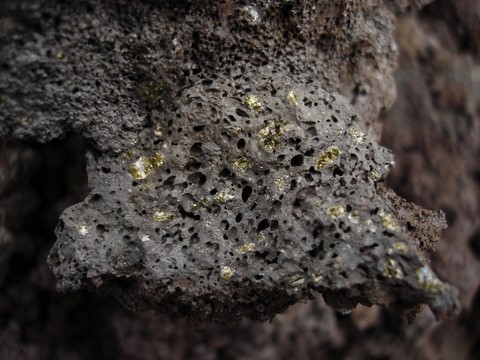Earth's oxygen explained by change in Earth's crust
Scientists have long wondered how Earth’s atmosphere filled with oxygen. UBC geologist Matthijs Smit and research partner Klaus Mezger may have found the answer in continental rocks that are billions of years old.
“Oxygenation was waiting to happen,” said Smit. “All it may have needed was for the continents to mature.”
Earth’s early atmosphere and oceans were devoid of free oxygen, even though tiny cyanobacteria were producing the gas as a byproduct of photosynthesis. Free oxygen is oxygen that isn’t combined with other elements such as carbon or nitrogen, and aerobic organisms need it to live. A change occurred about three billion years ago, when small regions containing free oxygen began to appear in the oceans. Then, about 2.4 billion years ago, oxygen in the atmosphere suddenly increased by about 10,000 times in just 200 million years. This period, known as the Great Oxidation Event, changed chemical reactions on the surface of the Earth completely.
Smit, a professor in University of British Columbia’s department of earth, ocean & atmospheric sciences, and colleague, professor Klaus Mezger of the University of Bern, were aware that the composition of continents also changed during this period. They set out to find a link, looking closely at records detailing the geochemistry of shales and igneous rock types from around the world — more than 48,000 rocks dating back billions of years.
“It turned out that a staggering change occurred in the composition of continents at the same time free oxygen was starting to accumulate in the oceans,” Smit said.
Before oxygenation, continents were composed of rocks rich in magnesium and low in silica – similar to what can be found today in places like Iceland and the Faroe Islands. But more importantly, those rocks contained a mineral called olivine. When olivine comes into contact with water, it initiates chemical reactions that consume oxygen and lock it up. That is likely what happened to the oxygen produced by cyanobacteria early in Earth’s history.
However, as the continental crust evolved to a composition more like today’s, olivine virtually disappeared.
Without that mineral to react with water and consume oxygen, the gas was finally allowed to accumulate. Oceans eventually became saturated, and oxygen crossed into the atmosphere.
“It really appears to have been the starting point for life diversification as we know it,” Smit said. “After that change, the Earth became much more habitable and suitable for the evolution of complex life, but that needed some trigger mechanism, and that’s what we may have found.”
As for what caused the composition of continents to change, that is the subject of ongoing study. Smit notes that modern plate tectonics began at around the same time, and many scientists theorize that there is a connection.
Smit and Mezger published their findings in the journal Nature Geoscience. The research was funded by the Natural Sciences and Engineering Research Council.

Articles in Q-MAG.org
Cyprus salt lakes exonerate Peoples of the Sea from destroying Bronze Age civilizations
Toppling Rome's obelisks and aqueducts
Trevor Palmer's response to Gunnar Heinsohn
Jan Beaufort: Conspiracy or religious history?
Gunnar Heinsohn's answer to Trevor Palmer
G.H.: Vikings without towns, ports and sails...
Trevor Palmer challenges Gunnar Heinsohn
The 1st Millennium AD controversy
The exact dates of the deaths of Patroclus and Hector
Lybian rock-art erased by Jihadists
The tsunami that obliterated Doggerland
Miles below ground, live the creatures of the Deep
Navigation systems of migratory birds suffer from electromagnetic fields
G.H.: Charlemagne's correct place in history
The petroglyph sundial of Mount Bégo
Mount Bégo: an electrical mountain

